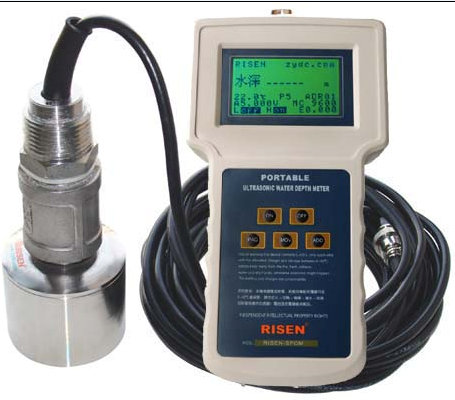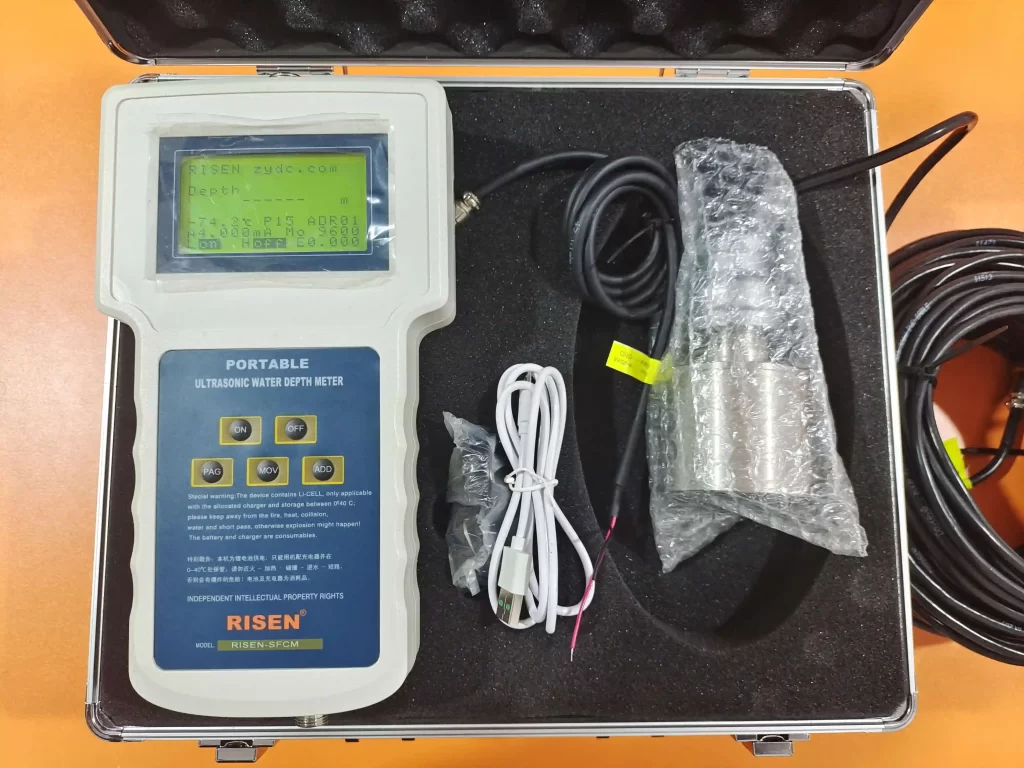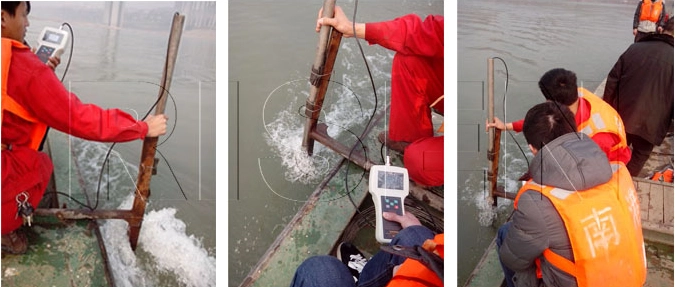Depth measurement is a technique for determining the distance between the surface of an object and a reference point. Water depth data from rivers and lakes is important for water management, flood control and disaster reduction, waterway maintenance, and ecological restoration. Traditional measurement methods are limited by efficiency, accuracy, and environmental. So they are struggling to meet the requirements of modern hydrological monitoring. However, the emergence of portable ultrasonic depth sounders is changing this situation.

The Challenges Of Traditional Measurement
Previously, hydrological workers struggled to operate traditional measuring instruments such as sounding rods and current meters in turbulent rivers. This traditional method was not only inefficient but also had some limitations.
- Environment limitations: High operational risks during heavy rains, at night, or during floods.
- Accuracy Fluctuations: Errors caused by water flow, mud and sand mixture, and human error affect the reliability of results.
- High Costs: Compared to modern technology, traditional methods typically require more time, manpower, and money to complete the same project.
Advantages Of Upgraded Equipment
Compared to traditional equipment, portable ultrasonic depth sounders offer significant advantages. A portable ultrasonic depth sounder is used to measure the depth of water in reservoirs, lakes, rivers, and shallow seas. During depth measurement, the ultrasonic transducer is placed at a specific position on or in the water’s surface.
This instrument is an ideal depth measurement tool, which is widely used in hydrological surveys, hydro power stations, reservoirs, shallow seas, lakes, river surveys, and environmental water quality monitoring. It integrates depth measurement, data transmission, and human-computer interaction functions. It integrates ultrasonic transceiver sensors, servo circuits, temperature compensation sensors and compensation circuit units, a display, a signal output unit, and serial data or analog output units.
The lightweight handheld unit allows for one-handed operation. It supports fixed-point measurements on inflatable boats, unmanned vessels, and even bridges and shorelines. During heavy rain and floods, data can be quickly acquired from the bridge without needing to go into the water, truly achieving “measurement wherever you go.” The main unit has a built-in rechargeable lithium battery, providing long battery life. During nighttime operations, the backlit screen and LED lighting ensure clear data visibility. Optional SD memory card with real-time recording function, adjustable storage interval, and downloadable data.
Case Study
A customer from Singapore saw our product on our website and contacted us. After a long communication, the final parameters were confirmed as follows.
- Portable Ultrasonic Depth Sounder
(English version) - 300m range
- 10m cable

Application Scenarios
1. Waterway and Port Construction
Water depth measurement is important in waterway and port construction. Accurate water depth data is needed when ships enter and leave ports to ensure the safety of waterways and reduce accidents caused by shoals or reefs. Water depth data is also important in emergencies. When ships are in distress or in distress, portable ultrasonic depth sounders can quickly provide water depth data to help crew members with emergency response, thereby increasing their chances of survival.
2. Environmental Monitoring and Protection
We can use water depth data to monitor changes in the water environment. So we can have a good understanding of water pollution and ecosystem health. As a result, we can ensure the sustainable use of water resources.
3. Fisheries Resource Management
Water depth data is important for fisheries resource management. Understanding water depth distribution helps us to identify fish habitats and rationally plan fishing areas. So we can better prevent overfishing and subsequent depletion of fishery resources.

Important Notes
- The portable ultrasonic depth sounder transducer can only work in water.
- When operating in seawater, the salinity value must be entered in the appropriate menu.
- The transmission power should not be set too high or too low, otherwise it will not function properly.
- Portable ultrasonic depth sounders have a blind zone; values displayed within the blind zone are random.
More Solutions For Liquid Level Measurement
Summary: Sino-Inst’s portable ultrasonic depth sounders are characterized by low maintenance, long lifespan, ease of use, simple operation, and accurate measurement. Our products are exported to countries such as Singapore, Ghana, and India. If you have any needs for water depth measurement, please contact our technical staff.
-1.jpg)